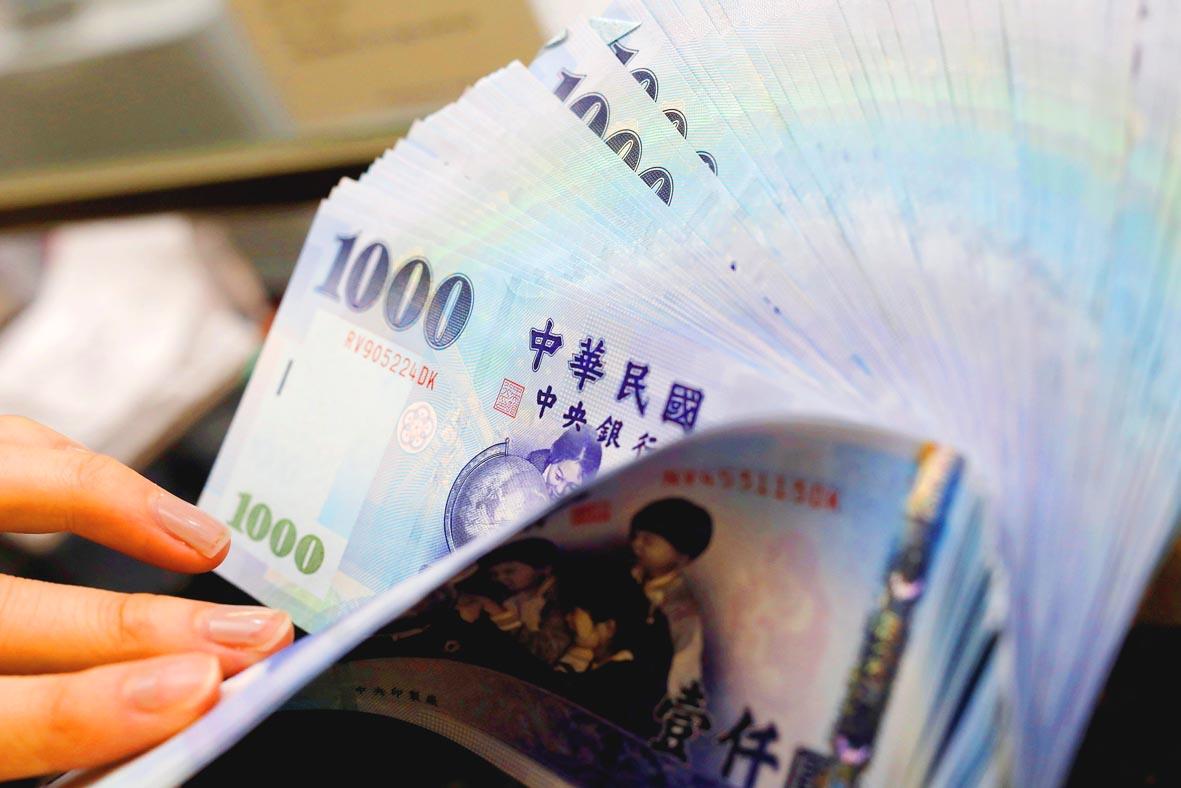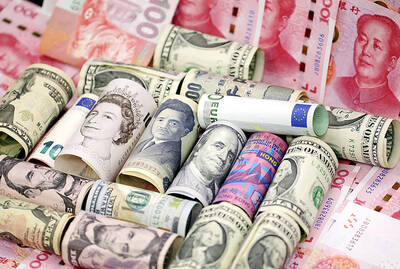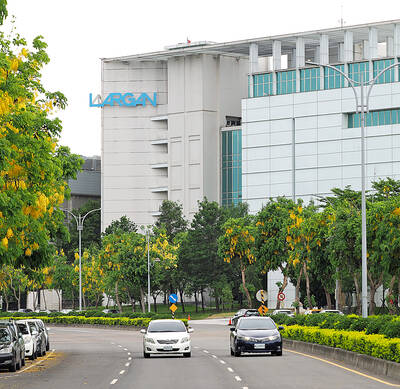The US Department of the Treasury on Wednesday added Taiwan to a list of countries being monitored for currency manipulation, the first time the nation has made the list since 2017.
The department issued its semiannual report to the US Congress on the policies of the US’ top 20 trading partners, which said that Vietnam and Switzerland had met the criteria for being labeled currency manipulators.
The manipulator designation has no specific or immediate consequence, beyond short-term market impacts, but US law requires the government to engage with the listed nations to address the perceived exchange-rate imbalance.

Photo: Tyrone Siu, Reuters
Penalties, including exclusion from US government contracts, could be applied after a year if the label is not removed.
Taiwan made it to the list of nations being monitored, along with India and Thailand, joining China, Japan, Singapore, South Korea, Germany, Italy and Malaysia, which were named in previous reports.
The department’s report, Macroeconomic and Foreign Exchange Policies of Major Trading Partners of the United States, states that a nation can be identified as a currency manipulator if it has a bilateral trade surplus with the US of at least US$20 billion, a current account surplus in excess of 2 percent of its GDP, and has engaged in persistent, one-sided intervention in the foreign exchange market. Taiwan met two of these criteria, it said.
First, Taiwan’s “persistently large current account surplus” — meaning that the value of its exports exceeds the value of its imports — reached 10.9 percent of GDP over the four quarters through June, the report said.
Taiwan’s bilateral trade surplus with the US expanded sharply during this period, rising to US$25 billion from US$18 billion the year before, the report said.
The report said that Taiwan had publicly disclosed its foreign exchange intervention in March, and encouraged it to “allow the New Taiwan dollar to appreciate to help reduce its large and durable external surpluses.”
“The Treasury welcomes Taiwan’s recent steps toward transparency and looks forward to continued efforts in this area,” it added.
The department usually publishes the assessment report in April and October, but had delayed its April report until Wednesday because of the COVID-19 pandemic.
Economies on the list must remain there for at least two consecutive reports to help ensure that any improvement “is durable and is not due to temporary factors.”
The last time Taiwan was on the monitoring list was from April 2016 to April 2017, while it was cited as a currency manipulator in 1988 and in 1992.
Additional reporting by Bloomberg

Taiwan’s foreign exchange reserves hit a record high at the end of last month, surpassing the US$600 billion mark for the first time, the central bank said yesterday. Last month, the country’s foreign exchange reserves rose US$5.51 billion from a month earlier to reach US$602.94 billion due to an increase in returns from the central bank’s portfolio management, the movement of other foreign currencies in the portfolio against the US dollar and the bank’s efforts to smooth the volatility of the New Taiwan dollar. Department of Foreign Exchange Director-General Eugene Tsai (蔡炯民)said a rate cut cycle launched by the US Federal Reserve

Handset camera lens maker Largan Precision Co (大立光) on Sunday reported a 6.71 percent year-on-year decline in revenue for the third quarter, despite revenue last month hitting the highest level in 11 months. Third-quarter revenue was NT$17.68 billion (US$581.2 million), compared with NT$18.95 billion a year earlier, the company said in a statement. The figure was in line with Yuanta Securities Investment Consulting Co’s (元大投顧) forecast of NT$17.9 billion, but missed the market consensus estimate of NT$18.97 billion. The third-quarter revenue was a 51.44 percent increase from NT$11.67 billion in the second quarter, as the quarter is usually the peak

The US government on Wednesday sanctioned more than two dozen companies in China, Turkey and the United Arab Emirates, including offshoots of a US chip firm, accusing the businesses of providing illicit support to Iran’s military or proxies. The US Department of Commerce included two subsidiaries of US-based chip distributor Arrow Electronics Inc (艾睿電子) on its so-called entity list published on the federal register for facilitating purchases by Iran’s proxies of US tech. Arrow spokesman John Hourigan said that the subsidiaries have been operating in full compliance with US export control regulations and his company is discussing with the US Bureau of

Pegatron Corp (和碩), a key assembler of Apple Inc’s iPhones, on Thursday reported a 12.3 percent year-on-year decline in revenue for last quarter to NT$257.86 billion (US$8.44 billion), but it expects revenue to improve in the second half on traditional holiday demand. The fourth quarter is usually the peak season for its communications products, a company official said on condition of anonymity. As Apple released its new iPhone 17 series early last month, sales in the communications segment rose sequentially last month, the official said. Shipments to Apple have been stable and in line with earlier expectations, they said. Pegatron shipped 2.4 million notebook